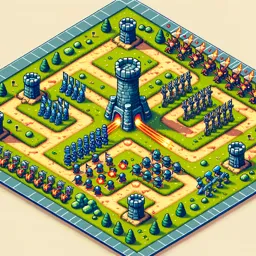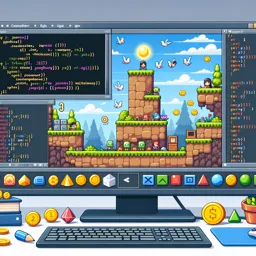Unity is a powerful and versatile game engine that empowers developers to create stunning 2D and 3D games across multiple platforms. However, achieving smooth and efficient gameplay in complex projects can be challenging. Performance optimization is crucial to providing players with a seamless experience, reducing load times, and minimizing lag or frame drops. In this article, we’ll explore essential techniques and best practices to optimize performance in Unity, ensuring that your game runs smoothly on a wide range of devices.
Why Performance Optimization Matters
Performance optimization is about more than just reducing lag or improving frame rates. A well-optimized game provides a better user experience, minimizes the chances of unexpected crashes, and can even lead to better user retention. For mobile platforms, optimization is critical due to limited hardware resources and battery consumption. By understanding the key areas to focus on and leveraging Unity’s built-in tools, developers can create high-quality games that perform consistently across devices.
Key Areas for Performance Optimization in Unity
- Efficient Memory ManagementMemory management is crucial for avoiding crashes and reducing load times. In Unity, inefficient memory usage can lead to increased garbage collection, causing frame rate drops and lag.
- Use Object Pooling: Reuse objects like enemies or projectiles instead of creating and destroying them frequently. Object pooling helps reduce memory fragmentation and the overhead associated with creating new instances.
- Optimize Asset Import Settings: Compress textures, audio, and meshes to reduce memory usage without sacrificing quality. Consider using lower resolution textures for mobile platforms to save on memory.
- Minimize Garbage Collection: Avoid unnecessary memory allocations within frequently called methods. Use structures like
List.Clear()instead of creating new lists, and limit the use ofInstantiateandDestroyin gameplay loops.
- Reducing Draw Calls and OverdrawDraw calls are commands sent from the CPU to the GPU to render objects. High numbers of draw calls can severely impact performance, especially on lower-end devices. Reducing draw calls and overdraw is essential for smooth gameplay.
- Use Static Batching and Dynamic Batching: Combine static objects into a single draw call using static batching, and group dynamic objects using dynamic batching.
- Optimize Materials: Use the same material for multiple objects to reduce draw calls. Consider using texture atlases to combine multiple textures into a single one.
- Cull Unnecessary Objects: Use frustum culling and occlusion culling to avoid rendering objects that are off-screen or hidden behind other objects.
- Optimizing Physics CalculationsPhysics calculations can be a significant drain on performance, especially in games with complex interactions and collisions. Optimizing physics is critical for maintaining smooth gameplay.
- Reduce Fixed Timestep: Lower the fixed timestep in the Time settings to reduce the frequency of physics calculations. A smaller number of physics updates per second can significantly improve performance.
- Use Simplified Colliders: Replace complex mesh colliders with simplified shapes like box, sphere, or capsule colliders wherever possible.
- Limit Rigidbody Usage: Use rigidbodies only for objects that require physics interactions. Disable unnecessary components like colliders and rigidbodies on inactive objects.
- Level of Detail (LOD) and Mesh OptimizationComplex meshes and high-poly models can quickly degrade performance, especially in scenes with many detailed objects. Use Level of Detail (LOD) techniques to optimize mesh rendering.
- Implement LOD Groups: Use LOD Groups to switch between high and low-detail models based on the camera’s distance from the object. This reduces the rendering load for distant objects.
- Optimize Meshes: Use mesh optimization tools to reduce the number of vertices and simplify complex models. Remove unnecessary geometry and hidden faces that are not visible to the player.
- Efficient Lighting and ShadowsLighting and shadows can be resource-intensive, especially in 3D environments. Optimizing lighting settings can significantly improve performance.
- Use Baked Lighting: For static scenes, use baked lighting instead of real-time lighting. Baked lighting pre-calculates lighting information, reducing the need for runtime calculations.
- Limit Real-Time Lights: Reduce the number of real-time lights in the scene, and use light probes and reflection probes to approximate lighting effects for dynamic objects.
- Optimize Shadows: Use lower-resolution shadows and limit the shadow distance. Avoid using shadows on small, unnoticeable objects.
- Script OptimizationEfficient scripting is essential for performance. Even well-optimized assets and settings can be undone by inefficient code.
- Avoid Expensive Operations in Update: Minimize the use of
Update()andFixedUpdate()for operations that do not need to be called every frame. Consider usingInvokeRepeatingor coroutines for less frequent updates. - Use Object Caching: Cache references to frequently used components, such as
TransformandRigidbody, to avoid costlyGetComponentcalls. - Profile and Refactor Code: Use Unity’s Profiler and Deep Profile mode to identify bottlenecks and refactor code for better performance.
- Avoid Expensive Operations in Update: Minimize the use of
- Using the Unity Profiler and Other ToolsThe Unity Profiler is an indispensable tool for identifying performance bottlenecks and testing optimizations. It provides real-time insights into CPU, GPU, memory, and rendering performance.
- Use the Profiler Regularly: Analyze your game’s performance throughout development, not just at the end. This helps catch issues early and avoid major rework.
- Test on Target Devices: Always profile on the target devices, especially for mobile games, to get an accurate representation of real-world performance.
- Use External Tools: Consider using tools like the Unity Frame Debugger, Intel GPA, and Xcode Instruments for more in-depth analysis and optimization.
Best Practices for Ensuring Smooth Gameplay
- Optimize Early and OftenStart optimizing performance from the beginning of development. Waiting until the end of the project can lead to major rework and missed performance issues.
- Prioritize Optimization Based on ImpactFocus on optimizing areas that have the highest impact on performance, such as draw calls, memory management, and physics calculations.
- Balance Quality and PerformanceAim for a balance between visual quality and performance. Test on a variety of hardware configurations to ensure a consistent experience across devices.
- Use Asynchronous LoadingImplement asynchronous loading for heavy assets and scenes to reduce loading times and prevent frame rate drops during gameplay.
- Profile in Real-World ScenariosTest performance under realistic conditions, including network latency, multiple players (for multiplayer games), and varying hardware capabilities.
Conclusion
Optimizing performance in Unity is essential for delivering a smooth and enjoyable gaming experience. By focusing on memory management, draw calls, physics calculations, and scripting, you can ensure that your game runs efficiently across devices. Use Unity’s powerful profiling tools and follow best practices to identify bottlenecks, track progress, and achieve the best possible performance. With the right optimizations, you can create visually stunning games that run seamlessly, providing players with an engaging and immersive experience.
































